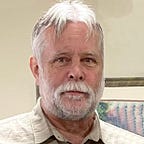A DNA Search for Columbus’s Origin: Dueling Legacies
Few historical figures have had their legacy as hotly debated as Christopher Columbus’s. Today as many cry “Tear down the statues,” others are still fervently claiming the controversial explorer for their own. Was Columbus really from Genoa, as long assumed and insisted upon by Italians and Italian Americans? Or possibly from Spain (which funded him) or Portugal (which had employed him) or Galicia, Croatia, or … Poland?
A twenty-year DNA project is aiming to settle that question once and for all — an effort which, judging from the passion involved, will fail however perfect the science. The Irish Times just published a broad write-up on the project that records that intensity.
“It’s like a debate over where Jesus was born,” said the president of the Galician Columbus Association, an organization whose very existence shows how Columbus has grown beyond history and into myth. (Researchers in Galicia (Spain) last year opened the tomb of a fifteenth century cleric whom some believe was a cousin of Columbus.)
The DNA project is a collaboration between laboratories in Granada, Florence, Rome, Texas, and Mexico led by the University of Granada. They are using DNA from Columbus’s remains and from relatives to determine his origin, basically a 23AndMe for a 500-year-old dead explorer.
Among the contenders on his place of origin are Genoa, Spain, Galicia (Spain), Portugal, the Balearic Islands (off the Mediterranean coast of Spain), and even Eastern Europe. One theory says Columbus was a Jew from the city of Valencia, another says he was a pirate from Coimbra, in Portugal.
The DNA project began 20 years ago with an excavation of Columbus’s tomb at Seville Cathedral. Even the location of his remains was/is controversial; researchers in 2006 used the excavated DNA samples to confirm Seville’s claim. The project has lasted two decades as researchers waited for forensic technology to improve enough that their results can be irrefutable.
Apparently, we now have the technology, and we may have results later this year, though I believe there will still be a lot of refuting going on (science bashing and history bashing are already in a historic upswing these days, so it won’t be a jump).
A long 20 years for Columbus
But times have changed, considerably so for Christopher Columbus
Today Columbus statues across the Americas are being toppled and replaced. Headlines each week report on statue replacements and monument controversies in places ranging from Chicago, Pittsburg, Denver, and Columbus, Ohio, to, with high-profile controversy, Mexico City.
The national hero myths that many countries (and at least two religions) created out of Columbus are giving way in the public eye to the genocides, slavery, and colonialism that ensued after 1492. And for Columbus, many point also to his own excesses and personal failings, which are well documented and corroborated.
Twenty years ago, conversely, the very idea of renaming Columbus Day in honor of America’s indigenous peoples was still novel. (Indigenous Peoples’ Day was first instituted in Berkeley, California, in 1992 to commemorate the 500th anniversary of Columbus’s arrival in the Americas).
Photo: ProtoplasmaKid
Clearly the results of the Granada University research will be released into a very different world than the one where it began. The results will be welcomed by people in the winning location and likely contested by the others. It does prove one thing, though: There’s a fine line between history and myth, and even well-corroborated historical records are as readily challenged as science is these days.
By John Sailors, Enrique of Malacca’s Voyage
© 2023 by John Sailors.
